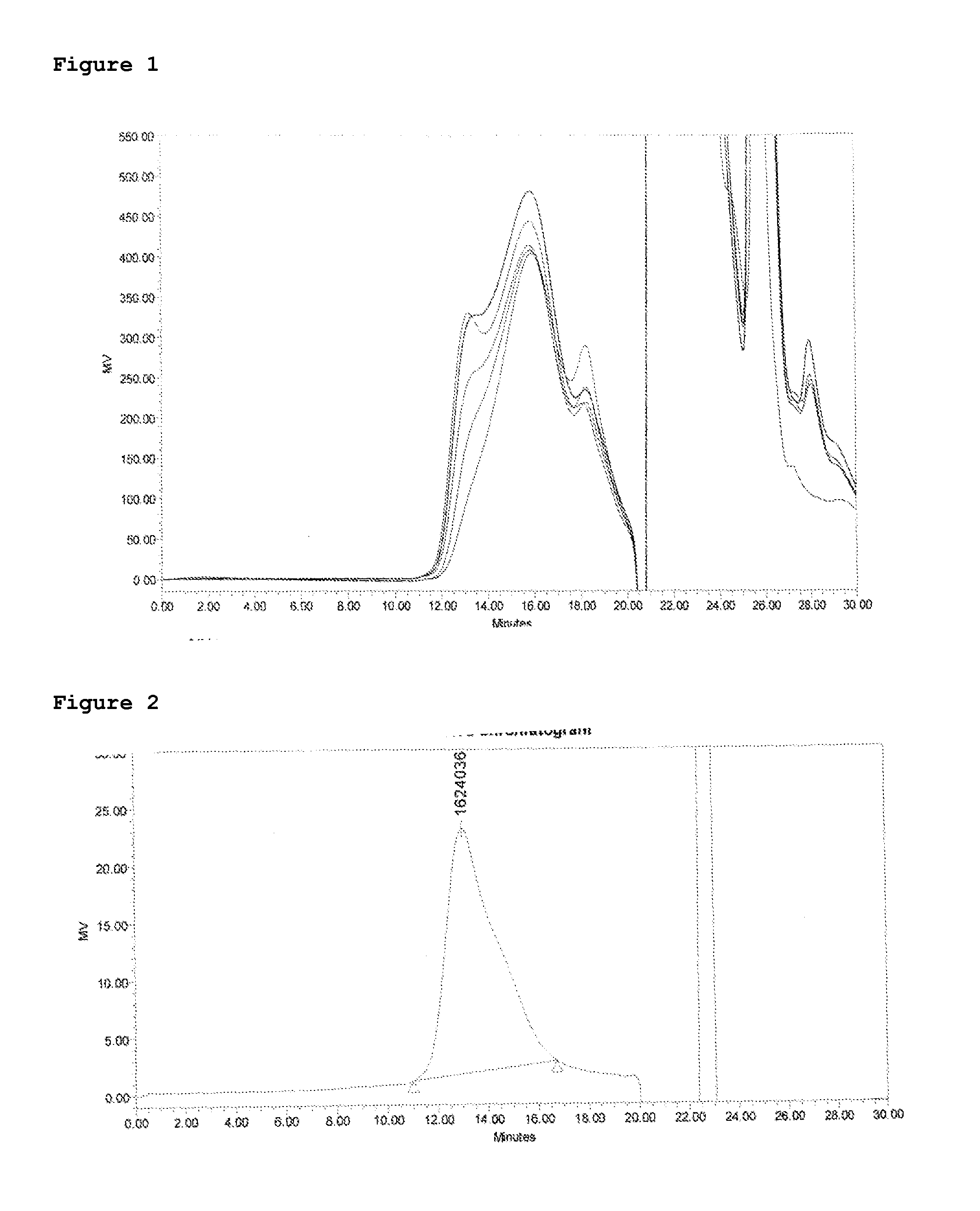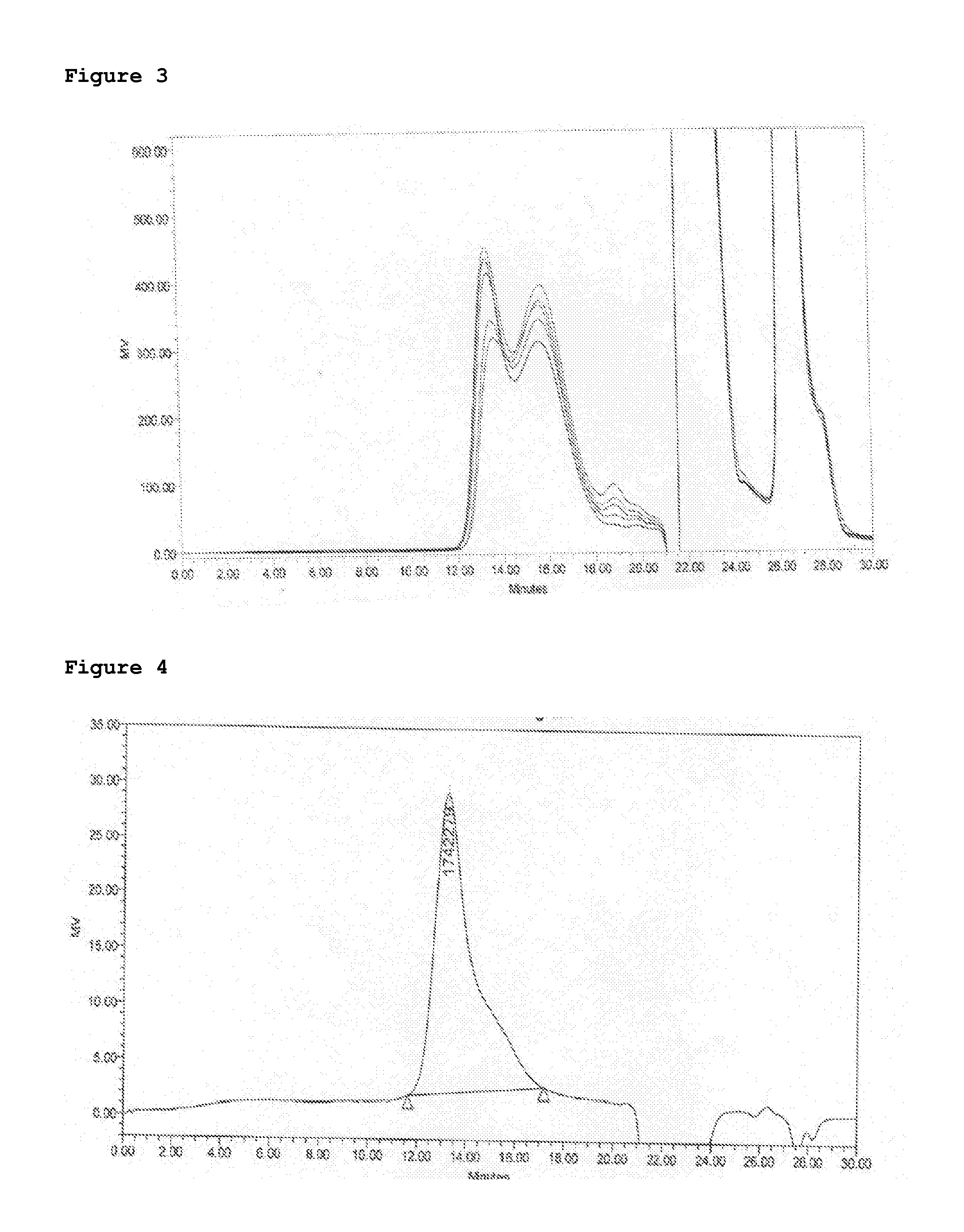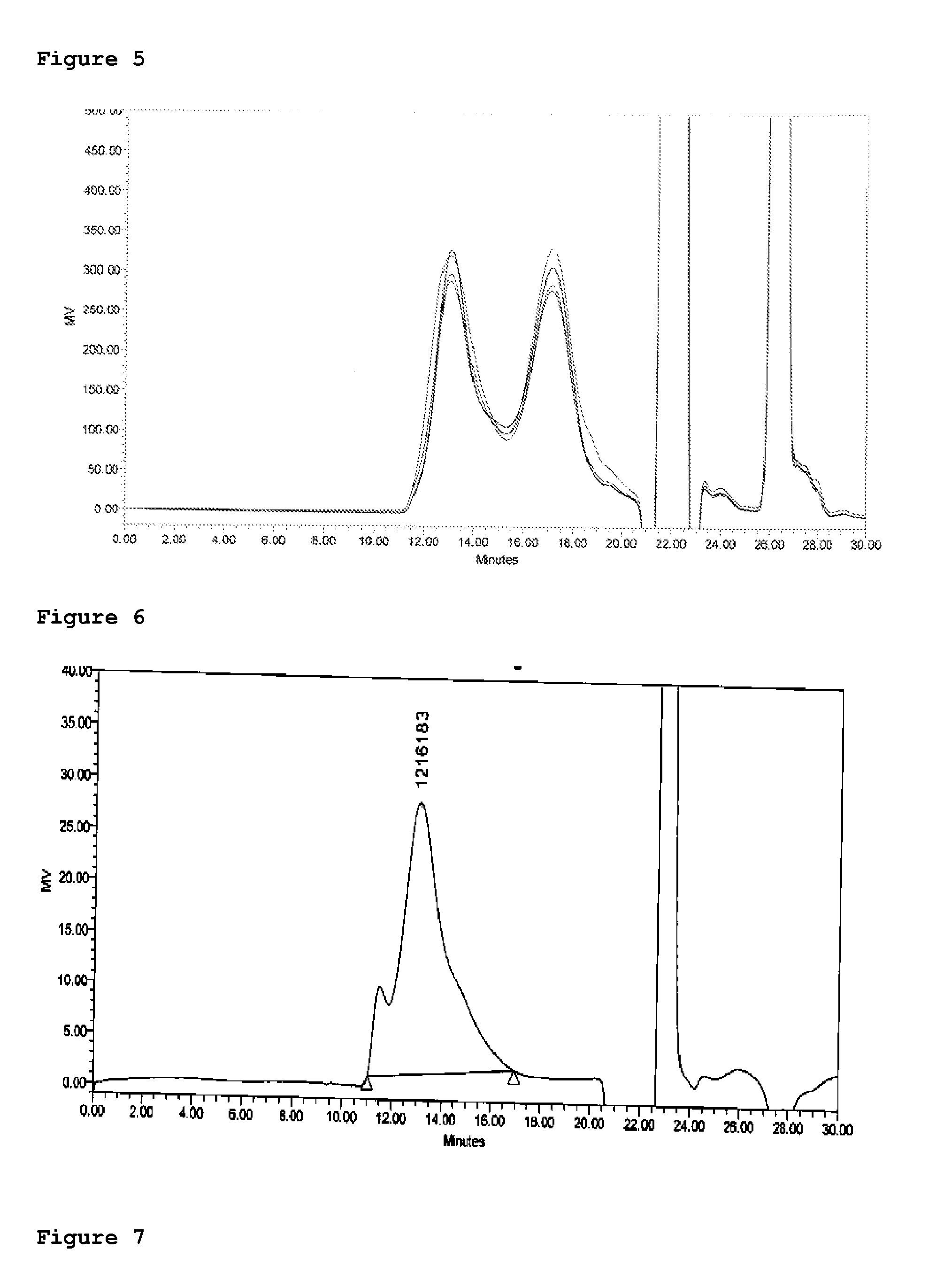Immunogenic composition
- Summary
- Abstract
- Description
- Claims
- Application Information
AI Technical Summary
Benefits of technology
Problems solved by technology
Method used
Image
Examples
example 1
Preparation of Meningococcal X polysaccharide
a) Fermentation and Purification of Meningococcal X Polysaccharide
[0053]Meningococcal X polysaccharides are obtained from N. meningitidis strains (8210 & 9601) by utilizing a suitable fermentation medium in a continuous fed-batch fermentation mode under optimal fermentor conditions. Further Meningococcal X capsular polysaccharides are typically prepared by a process comprising the steps of CTAB based precipitation, Ethanol (96%) treatment followed by depth filtration, carbon filtration, CaCl2 precipitation, Ethanol (96%) treatment and ultrafiltration.
b) Sizing of Meningococcal X Polysaccharide
[0054]Purified Meningococcal X polysaccharides were subjected to 1-2 passes of mechanical sizing (Constant systems cell disruptor) in WFI at a pressure of about 30-40 kpsi.
example 2
Conjugation of Meningococcal X Polysaccharide to Carrier Protein
a) Meningococcal X Polysaccharide of Varying Average Molecular Weight Conjugated to Hydrazine Derivatized Tetanus Toxoid (TT)
[0055]Firstly homogenized Polysaccharide of X (Strain 9601), Average molecular weight 215 kD on SEC HPLC, (30 mg / ml) 45 mg was activated with 90 mg CDAP (dissolved 100 mg / ml in acetonitrile), pH of mixture was adjusted to 9.5 with 1M NaOH. Then after 3 min hydrazine activated TT (30 mg / ml in 1M NaCl) 67.5 was added to the reaction. The reaction was monitored on HPLC and continued upto 18 hrs. After 18 hrs reaction was quenched by addition of glycine and crude conjugate was purified by diafiltration 300 kD TFF membrane in Tris 10 mM pH 7.2. Shodex columns SB-804 HQ and SB-805 HQ were used sequentially with PBS as mobile phase at 1 ml / min flow rate. Polysaccharide concentration and protein concentration were determined by phosphorous assay and modified Lowry assay respectively.
[0056]Secondly Polysac...
example 3
Conjugation of Meningococcal A, C, Y, W135 Polysaccharide to Carrier Protein CRM197
[0061]Purified Meningococcal polysaccharides A C Y W135 having average Mw between 100 to 200 were conjugated to CRM197 in a saccharide:protein ratio of less than 1 by utilizing a suitable cyanylation reagent (CDAP or CPPT). The conjugates were further purified by diafiltration on 300 kD TFF with 50 volumes of 10 mM PBS and 50 volume of 10 mM Tris.
PUM
| Property | Measurement | Unit |
|---|---|---|
| Temperature | aaaaa | aaaaa |
| Temperature | aaaaa | aaaaa |
| Temperature | aaaaa | aaaaa |
Abstract
Description
Claims
Application Information
 Login to View More
Login to View More - R&D
- Intellectual Property
- Life Sciences
- Materials
- Tech Scout
- Unparalleled Data Quality
- Higher Quality Content
- 60% Fewer Hallucinations
Browse by: Latest US Patents, China's latest patents, Technical Efficacy Thesaurus, Application Domain, Technology Topic, Popular Technical Reports.
© 2025 PatSnap. All rights reserved.Legal|Privacy policy|Modern Slavery Act Transparency Statement|Sitemap|About US| Contact US: help@patsnap.com



